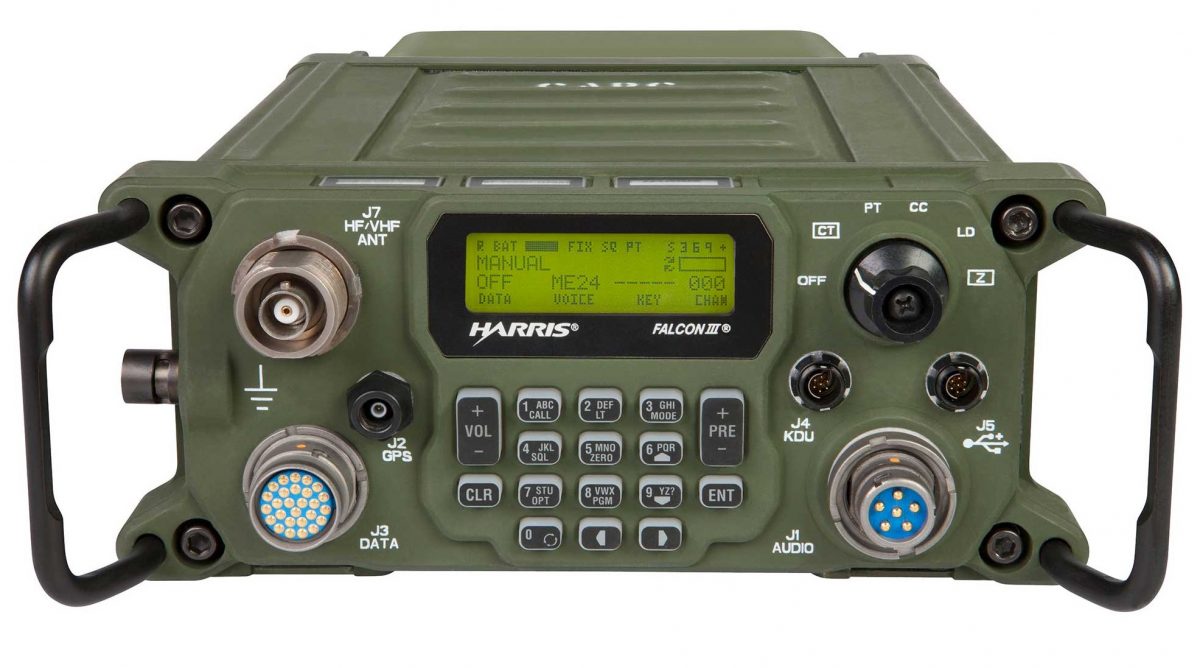 Many thanks to SWLing Post contributors Michael Guerin and Dennis Dura who share the following story from C4ISR.net (my comments follow excerpt):
Many thanks to SWLing Post contributors Michael Guerin and Dennis Dura who share the following story from C4ISR.net (my comments follow excerpt):
LONDON — Special operations commands across Europe are ramping up their capabilities with high-frequency communications to ensure connectivity on the battlefield. Leaders there are turning to high frequency communications as a way to optimize properties that provide a low probability of interception and detection.
Special forces in France, Germany, Poland and Ukraine continue to receive high-frequency, or HF, systems as a way to diversify communications plans, industry sources confirmed to C4ISRNET.
Some special operations organizations have selected L3Harris’ AN/PRC-160(V), industry sources said.
Enhancements in HF come at a time when NATO members and partner forces are suffering from a disruption of satellite communications, particularly along the alliance’s eastern flank where Russian armed forces continue to conduct electronic warfare.
In an online presentation to the Association of Old Crows on Aug. 6, Paul Denisowski, product management engineer at Rohde and Schwarz North America, described how communications satellites are vulnerable to antisatellite systems as well as ground-, air- and space-based “kill vehicles.”
“China, Russia and the U.S. have all carried out ASAT tests and many other countries are developing ASAT capabilities,” Denisowski said, using an acronym for anti-satellite. To boost resilience, some commands are turning to high-frequency communications.
During the presentations “Lost Art of HF” and the “Rebirth of Shortwave in a Digital World,” Denisowski explained that HF is making a comeback in local and global communications. This renaissance comes as the result of improvements in a range of fields, including antenna design, digital modulation schemes and improved understanding of propagation.
The market is also helped by reductions in size, weight and power requirements as well as the introduction of wideband data, enhanced encryption algorithms and interoperability with legacy HF sets, he said.
“This means end users are now benefiting from easier-to-use and cheaper solutions featuring improved data performance, audio quality, availability and operation. And because of a lack of infrastructure, HF is less expensive and relatively robust, although solar events may temporarily disrupt HF communications,” he said. Specific upgrades include “Adaptive HF,” which comprises automatic selection of frequency and the establishment of communication through automatic link establishment, or ALE, technology.
The latest technology of its type — 4G ALE — is capable of supporting wideband HF communications, or WBHF for short, providing end users with the ability to “negotiate bandwidth, modulation type, error correction and the number of sub-carriers,” Denisowski explained.
“ALE selects frequencies using link quality analysis, which allows it to listen and determine if a channel is in use and adapt if conditions change,” he said.
He added that HF can now support data rates up to 240 kilobytes per second on a 48-kilohertz channel, particularly useful for more robust communications in hostile environments.
“WBHF has already [been] used in military trials. It’s a technology which is most definitely here and now,” Denisowski said.
[…]The report explained how the U.S. Army and European NATO partners explored such scenarios during a series of joint exercises in 2019 and 2020. “A new need arrives for alternative communication skills, justified through the increasing vulnerability from SATCOM jamming as well as the potential failure of SATCOM as a result of attacks on spacecraft or through the use of anti-satellite surface-to-air missiles,” the report’s author, Jan Pätzold, told C4ISRNET. “The development of alternative skills is important to reduce dependence on SATCOM.”
According to Pätzold, so-called Skywave HF, which bounces signals off the ionosphere, enables beyond line-of-sight communications across “thousands of kilometers” without requirements. HF communications is also ideally suited to supporting local network coverage. “This offers advantages over SATCOM in urban areas, but also in mountainous areas or far north latitudes where no line of sight to existing satellites is possible,” Pätzold said
Click here to read the full story at C4ISR.net.
My comment: What’s old is new again
As I’ve said in previous posts:
The shortwaves–which is to say, the high-frequency portion of the radio spectrum–will never disappear, even though international broadcasters may eventually fade into history. I often think of the shortwave spectrum as a global resource that will always be here, even if we humans are not. But on a brighter note, I expect the shortwave spectrum will be used for centuries to come, as we implement various technologies that find ways to make use of the medium.
HF communications require so little infrastructure to be effective. It’s a global communications medium that carries messages and data at the speed of light with no regard for national borders. Sure, there are reliability issues with HF propagation, but even amateur radio enthusiasts employ weak-signal digital modes that almost seem to defy propagation. I’m certain with the backing of the military, even more robust digital modes will be used (above and beyond ALE).
Even the business world sees opportunity. Case in point: we’ve seen stock traders set up point-to-point HF communications to edge out their competitors who rely on fiber optics.
HF systems are more durable and easier to harden to endure times of intense space weather events that affect our sat networks as well.
But then again, I’m preaching to the choir.
